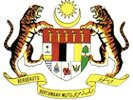Choose one!.
A little island not more than 20 minutes away by boat from the sleepy village of Marang, Pulau Kapas(Cotton Island) basks idyllically as it has for over 270million years. This little haven in the South China Sea and just off the Terengganu coast is a pleasant getaway for the locals during weekends. During the weekdays, it can be surprisingly quiet as throngs of visitors depart home to their 9-to-5 jobs and businesses.
Pulau Kapas is a small island, just over 2km long and 1km at its widest point. Since it is so close - only 6km from the mainland, visitors seldom stay overnight. For those who prefer to spend a longer time on the island, there are a variety of accommodations available on the island best suited to most travellers although non rivalling exclusive resorts such as 'Banyan Tree' or the 'Aman' resort establishments. The resorts here provide satisfactory amenities and service which of course, the price of a night's accommodation will commensurate with. Most resorts are clustered together on two strips of white sandy beaches facing the mainland, whereas the rest of the island is largely forested harbouring lots of small mammals, birds, insects and reptiles.
On the edges of the island, colourful reefs extend out into the deep, blue sea where a host of marine life continues to build and live in these rich , exuberant gardens of the sea. Pulau Kapas began to take shape some 270million years ago when the sea level was way below what it is now. Over a long period of time, sedimentation from the land was washed out into the sea, adding layer upon layer, which then formed a strip of elevated land . Eventually this area formed into an island and seeds and pollens that drifted along with the wind and the sea, settled on the drier grounds, giving life to a complete ecosystem as we see on Pulau Kapas today.
These pretty fishes are specific to coral reefs which means that they live nowhere else except in coral patches. If the coral gardens at Kapas disappear, so do the fishes. Please help preserve the corals - the operators are not aware of their own actions. If you see anybody breaking corals, standing on them, littering and even those who are directing dirty water into the coral reefs.please tell them that they are slowly but surely, killing their own future.
The coral reef probably started its life in the early beginnings of Pulau Kapas. It is this beauty that for so many years people have come to enjoy. As a marine park, the coral reefs and its marine inhabitants have been given full protection from any adverse activity that may destroy their habitat, and that includes fishing.
With such foresight from the local authorities, the reefs are left in its pristine state that host an abundance of beautiful coral inhabitants such as the parrotfish, pufferfish, angelfish, damselfish; eels; giant clams; rays, sea urchins, sea cucumbers and nudibranchs. This is the place to really indulge in snorkelling. There is a wonderful snorkelling spot around the rocky outcrops just to the southern end of the long stretch of beach. The water here is shallow and it is best to wear a lifejacket. In some places the water level at low tide may only be as shallow as 2 feet. There is just so much to see around that snorkellers often lose track of direction and may get trapped in the shallow ends. When this happens, they often panic and start trashing about and usually try to stand up in the process. This is dangerous as the seabed is covered with extremely sharp corals and can cause deep wounds. The other danger to look out for are the sea urchins hiding in and around the corals. The thorny spines of the sea urchin can pierce through delicate skin, believe you me - it's excruciating!
For new snorkellers, bring along a lifejacket and a pair of fins and never, ever step on corals. Fire coral is another thing to look out for. If brushed against, it causes a searing pain as if brushing against a burning cinder. This is another reason why it is always advisable that snorkellers should never touch corals and fishes for as pretty and helpless as they seem, they often have powerful defence mechanisms against predators.
For the advanced snorkellers, a dip in the coral gardens is a delight especially on nights when the moon is full. The entire scene transforms itself and introduces a host of nocturnal marine life that are rarely seen during the day. The corals extend their feeders out in full bloom to capture tiny plankton washed in from the open sea, the nudibranchs leave their hiding place to feed on the coral polyps and squirrelfishes come out to play.
For landlubbers, there is a rough track through the middle of the island and towards the eastern side. If that's not your cup of tea, it is possible to hire canoes for exploring the more secluded shores and beaches towards the northern tip of the island.
An update on the place: May 5th 2004
A trip back to P.Kapas recently has left us a little worried about the future of the island. There are simply too many operators on the stretch of beach and many of them do not have proper sewage systems. This means that much of the sewage is directed into the sea. This pollution in turn is slowly killing the corals. This and other pending issues that the resort owners are facing, may seal the island's future and from where we're standing, it doesn't look good. After a decade of inhabitants, the infrastructure has yet to be developed on the island and piped water can be a problem especially during dry seasons when the fresh water level drops. Rubbish left on the island by day trippers is a sight. Although there seems to be much discontentment voiced by some of the operators of resorts on the island about the condition of their beaches and the little help that they receive from the government on such matters, there also seems to be not much done to arrest the issue of piling rubbish from these operators themselves.
Boat operators are also helping to kill off the corals by smashing them up as they manoeuvre their boats to shore specifically on the more remote beaches on Pulau Kapas. Their ignorance is indeed astounding for when questioned about their actions,most often than not the answer is derived from sheer ignorance that corals will and can sprout as easily as land plants! A suggestion was highlighted by a concerned resort owner recently to resolve this matter of anchor damage - that is to provide mooring buoys. With such misconduct and ignorance, in a matter of 5 to 10 years the beauty and lure of Pulau Kapas will only be recorded in photographs.
1 Comment:
-
- Kamagra said...
August 27, 2010 at 4:54 AMI am really surprised about how great is this place and it's full of natural resources that are so important to care these.







